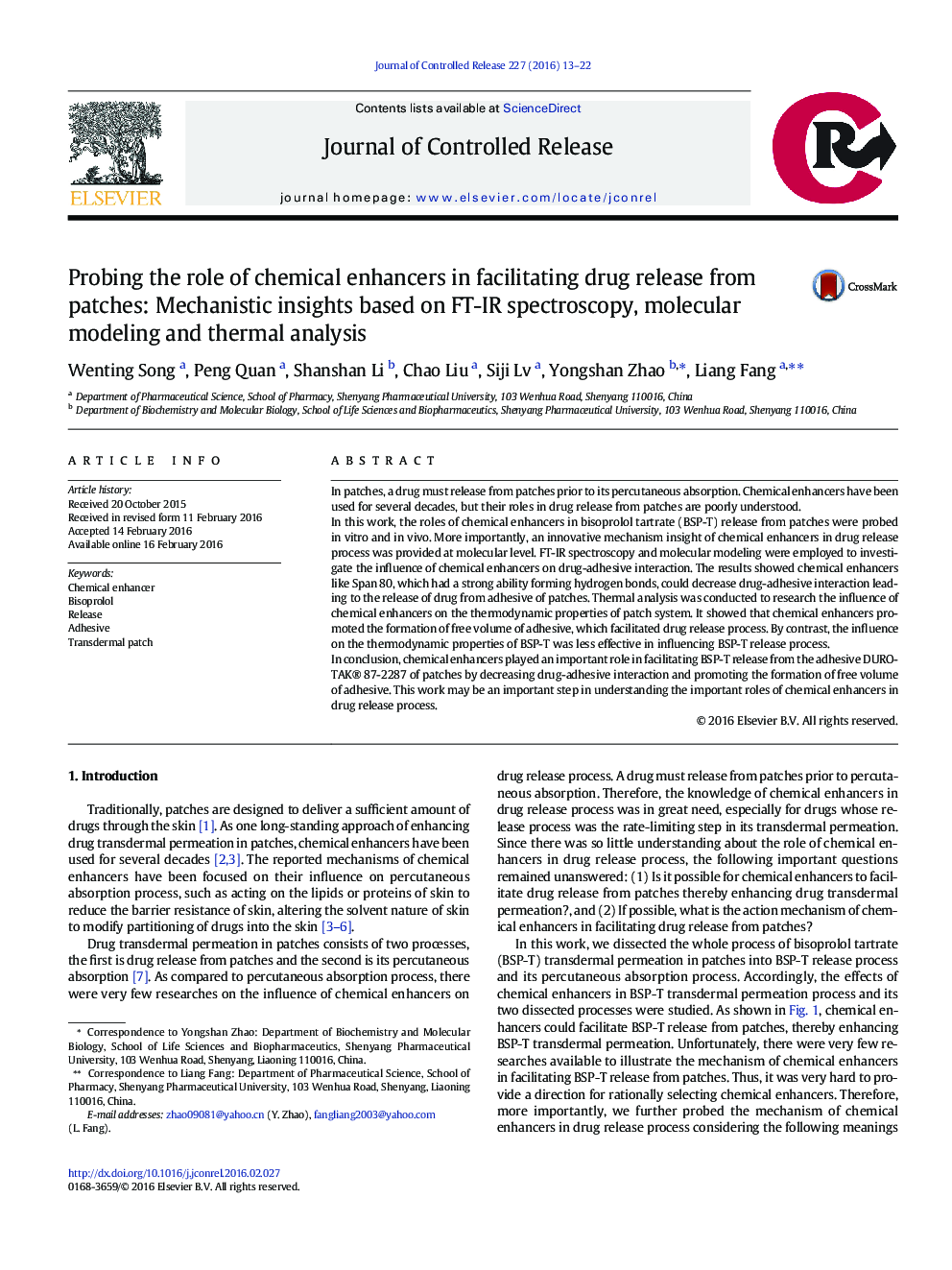| Article ID | Journal | Published Year | Pages | File Type |
|---|---|---|---|---|
| 1423621 | Journal of Controlled Release | 2016 | 10 Pages |
In patches, a drug must release from patches prior to its percutaneous absorption. Chemical enhancers have been used for several decades, but their roles in drug release from patches are poorly understood.In this work, the roles of chemical enhancers in bisoprolol tartrate (BSP-T) release from patches were probed in vitro and in vivo. More importantly, an innovative mechanism insight of chemical enhancers in drug release process was provided at molecular level. FT-IR spectroscopy and molecular modeling were employed to investigate the influence of chemical enhancers on drug-adhesive interaction. The results showed chemical enhancers like Span 80, which had a strong ability forming hydrogen bonds, could decrease drug-adhesive interaction leading to the release of drug from adhesive of patches. Thermal analysis was conducted to research the influence of chemical enhancers on the thermodynamic properties of patch system. It showed that chemical enhancers promoted the formation of free volume of adhesive, which facilitated drug release process. By contrast, the influence on the thermodynamic properties of BSP-T was less effective in influencing BSP-T release process.In conclusion, chemical enhancers played an important role in facilitating BSP-T release from the adhesive DURO-TAK® 87-2287 of patches by decreasing drug-adhesive interaction and promoting the formation of free volume of adhesive. This work may be an important step in understanding the important roles of chemical enhancers in drug release process.
Graphical abstractFigure optionsDownload full-size imageDownload high-quality image (75 K)Download as PowerPoint slide
